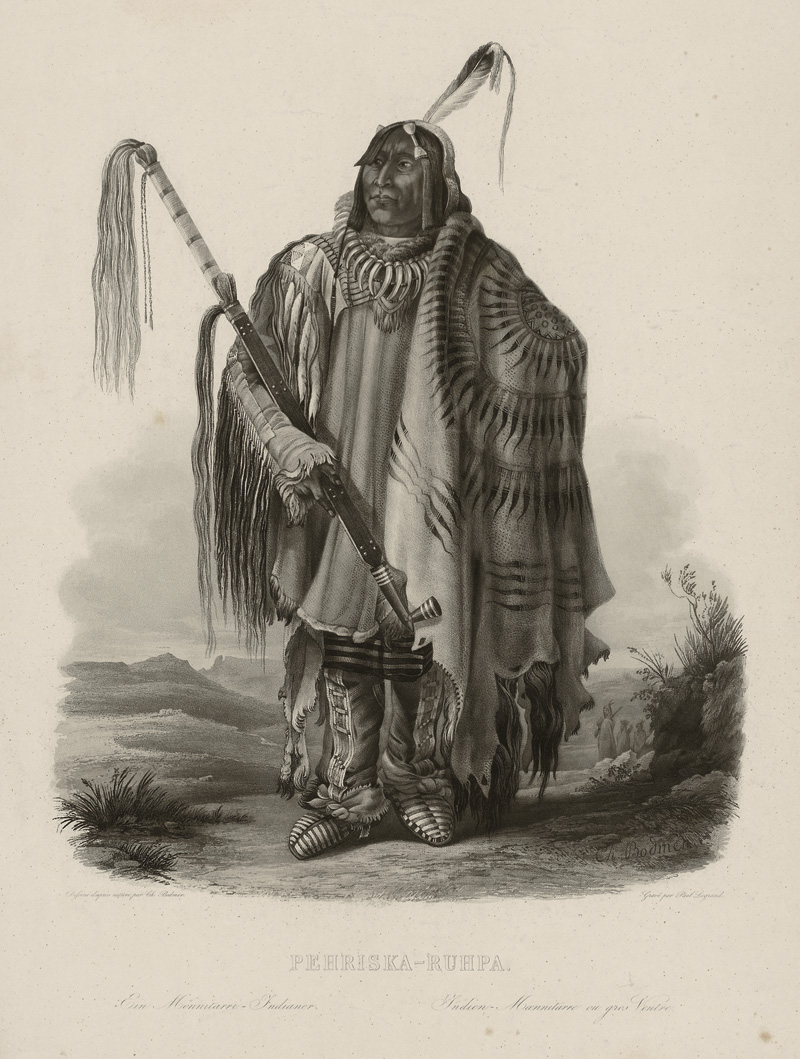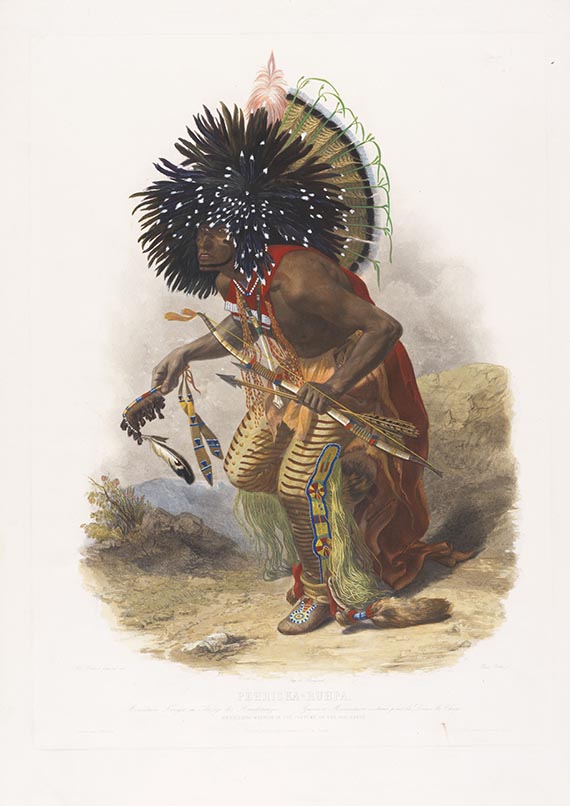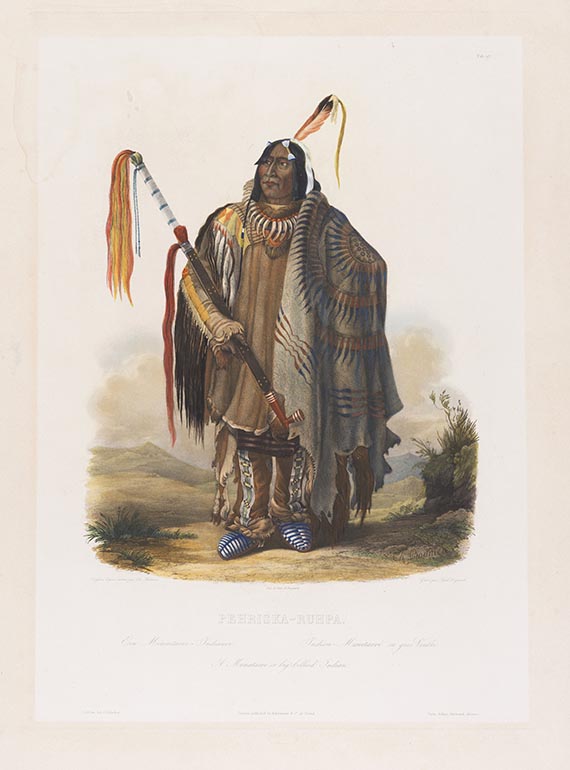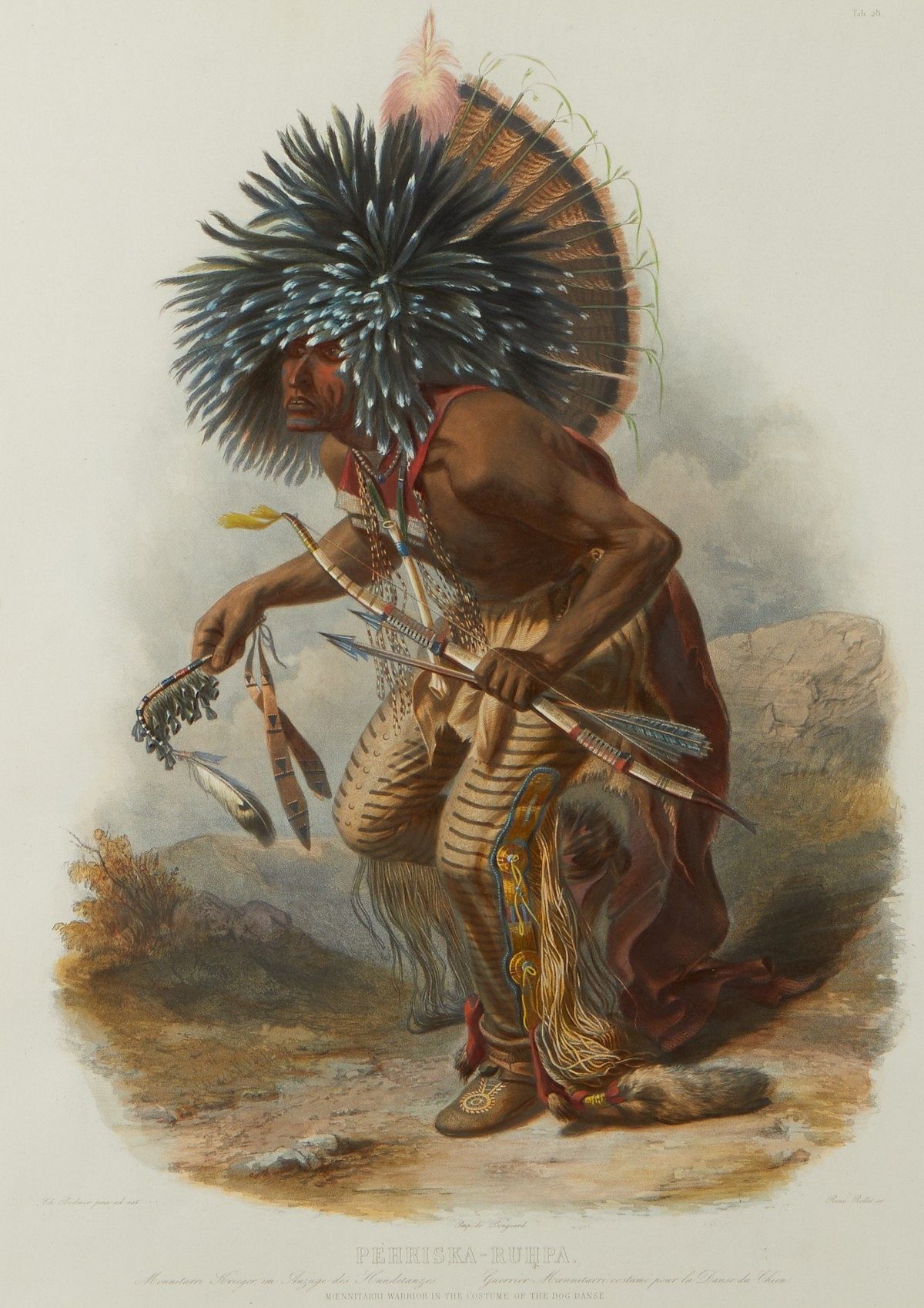Péhriska-Rúhpa. [A Minatarre or Big-Bellied Indian]. [Tab. 17].
Paris , Coblenz and London: 1839-1842]. Hand-colored aquatint engraving by Paul Legrand after Bodmer, blindstamp, issue without imprint line or English sub-title. Sheet size: 24 1/2 x 17 1/2 in. This powerful portrait of Péhriska-Rúhpa ('Two Ravens') presents the warrior and chief of the Hidatsa as a figure of great dignity. He adopts an attitude that would have been familiar to all men of power and rank, his worth displayed symbolically in his clothing and adornment. His shirt is trimmed with bands of bright yellow quillwork, elaborately fringed with ermine, locks of human hair and dyed horsehair. He wears a striped woolen breechclout and quilled leggings of deer skin. Around his neck is a necklace of bear claws, fastened to an otter-skin band and spaced with blue and white beads. Symbols of great wealth, these necklaces were made from the foreclaws of grizzly bears, preferably from animals taken in the spring when the claws were large comparatively unworn and showing white tips. A decorated buffalo robe over one shoulder and arm, Péhriska-Rúhpa holds his decorated pipe in the crook of his other arm. This is one of Bodmer's masterpieces of portraiture, and was carried out during the travellers' winter stop-over at Fort Clark in 1833-1834.
Péhriska-Rúhpa. [A Minatarre or Big-Bellied Indian]. [Tab. 17].
Paris , Coblenz and London: 1839-1842]. Hand-colored aquatint engraving by Paul Legrand after Bodmer, blindstamp, issue without imprint line or English sub-title. Sheet size: 24 1/2 x 17 1/2 in. This powerful portrait of Péhriska-Rúhpa ('Two Ravens') presents the warrior and chief of the Hidatsa as a figure of great dignity. He adopts an attitude that would have been familiar to all men of power and rank, his worth displayed symbolically in his clothing and adornment. His shirt is trimmed with bands of bright yellow quillwork, elaborately fringed with ermine, locks of human hair and dyed horsehair. He wears a striped woolen breechclout and quilled leggings of deer skin. Around his neck is a necklace of bear claws, fastened to an otter-skin band and spaced with blue and white beads. Symbols of great wealth, these necklaces were made from the foreclaws of grizzly bears, preferably from animals taken in the spring when the claws were large comparatively unworn and showing white tips. A decorated buffalo robe over one shoulder and arm, Péhriska-Rúhpa holds his decorated pipe in the crook of his other arm. This is one of Bodmer's masterpieces of portraiture, and was carried out during the travellers' winter stop-over at Fort Clark in 1833-1834.















Testen Sie LotSearch und seine Premium-Features 7 Tage - ohne Kosten!
Lassen Sie sich automatisch über neue Objekte in kommenden Auktionen benachrichtigen.
Suchauftrag anlegen